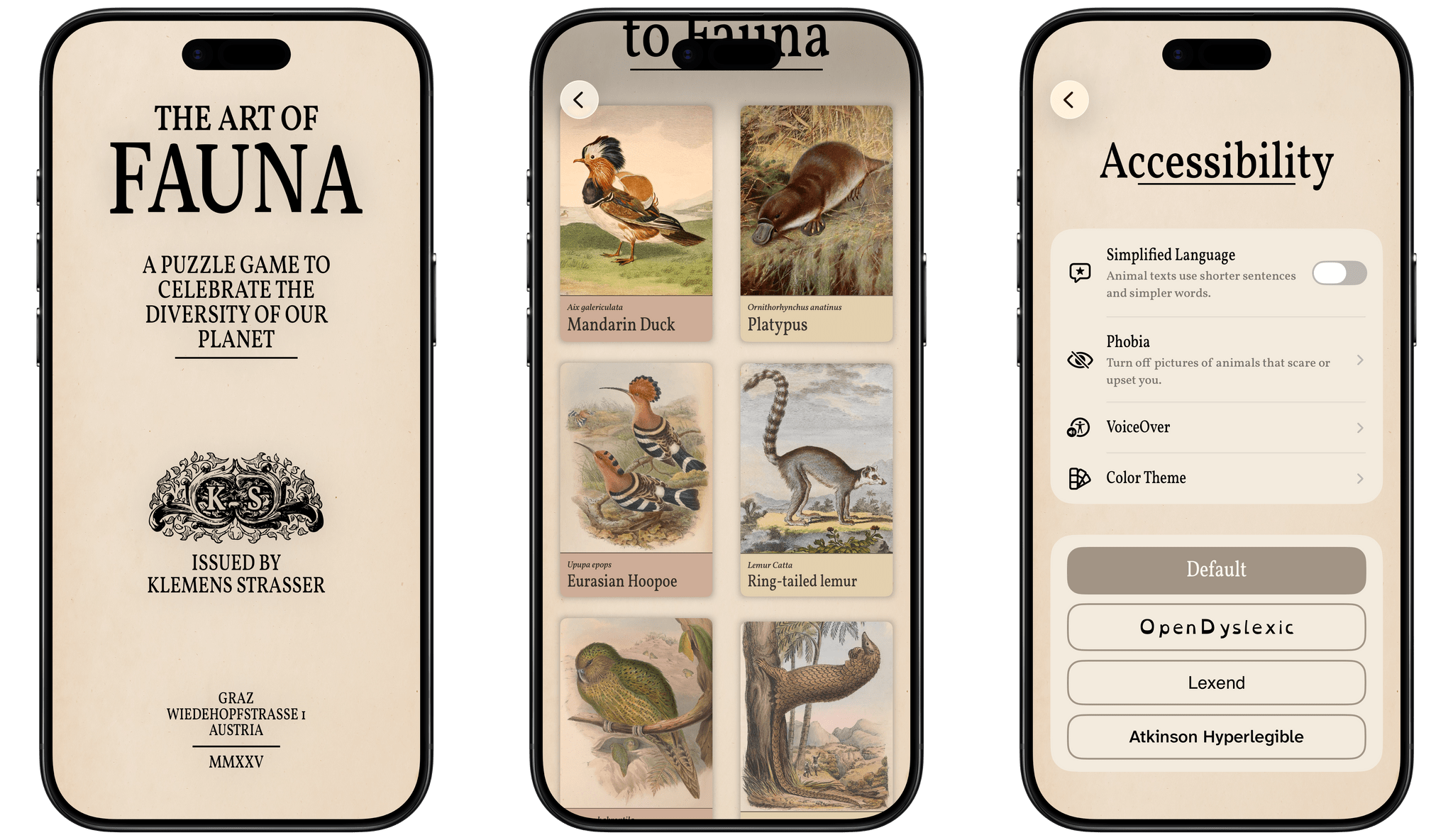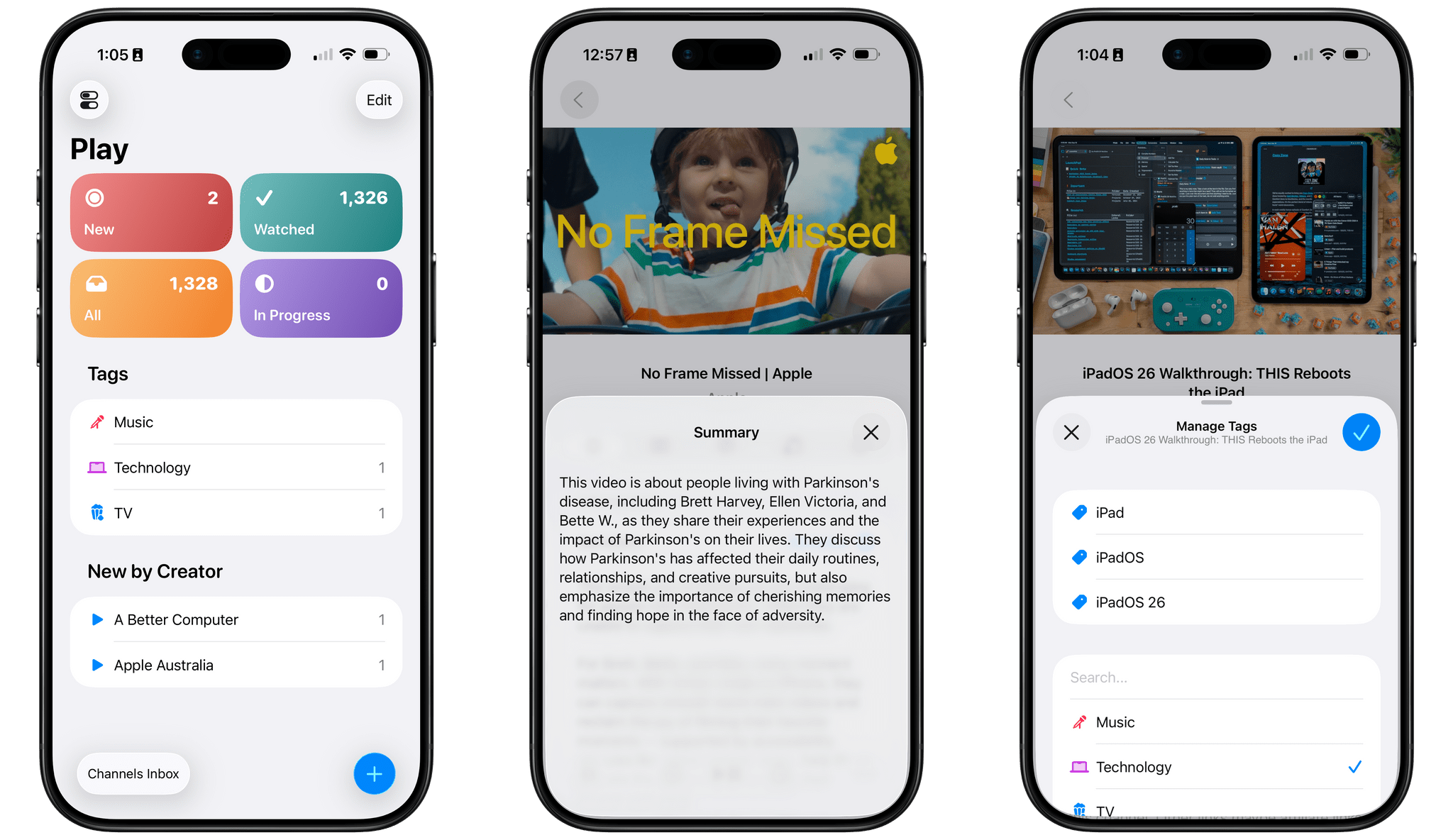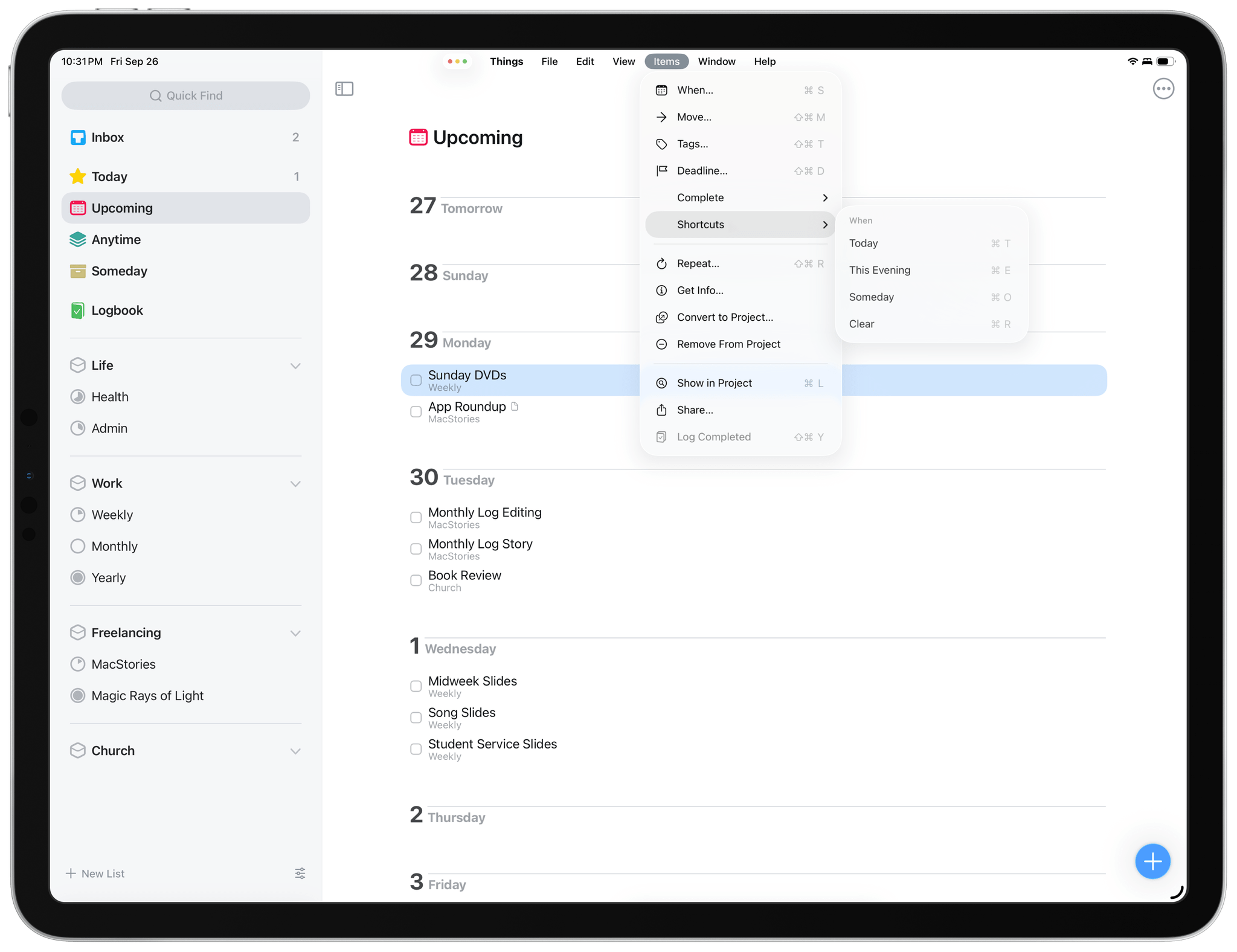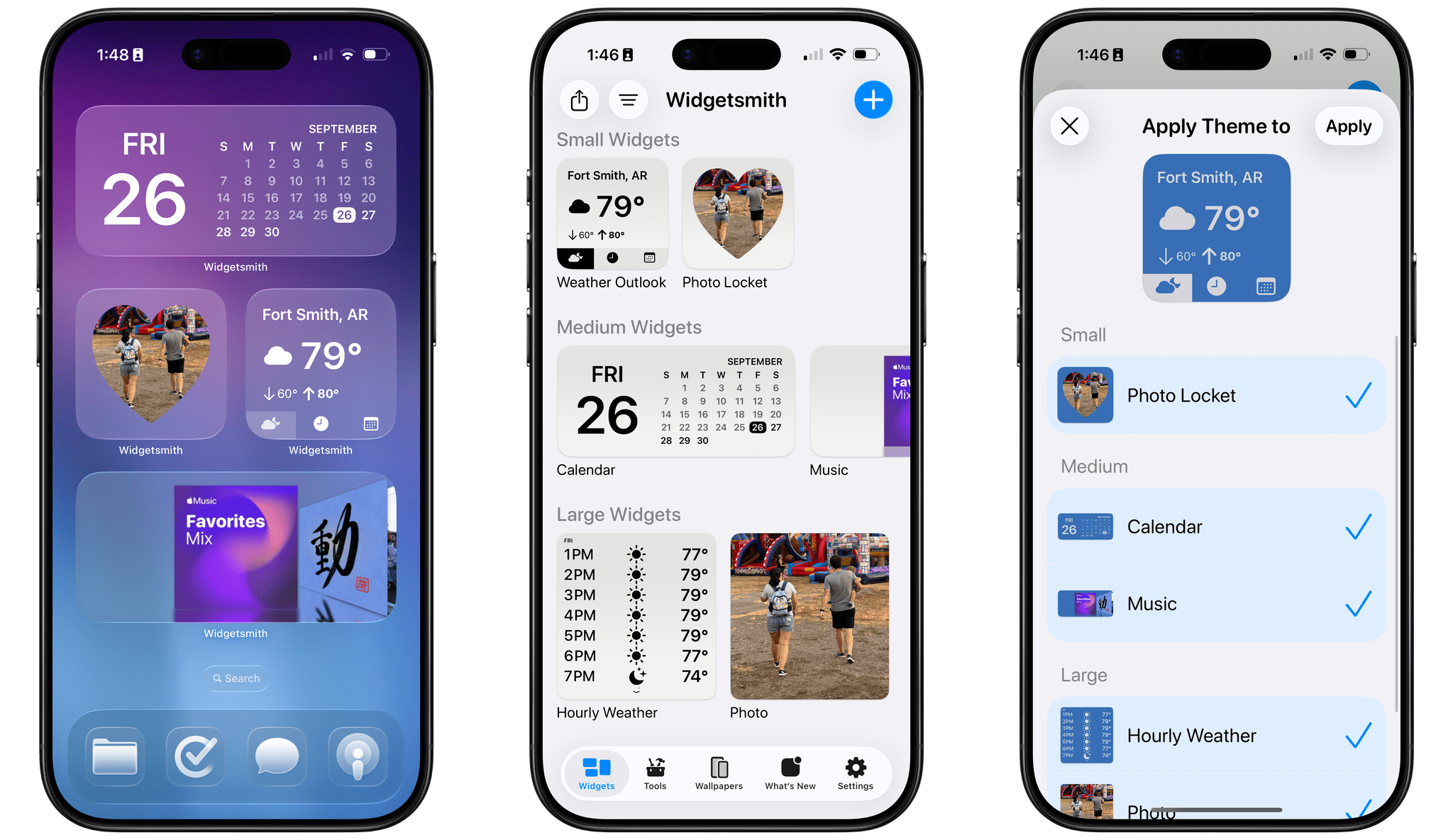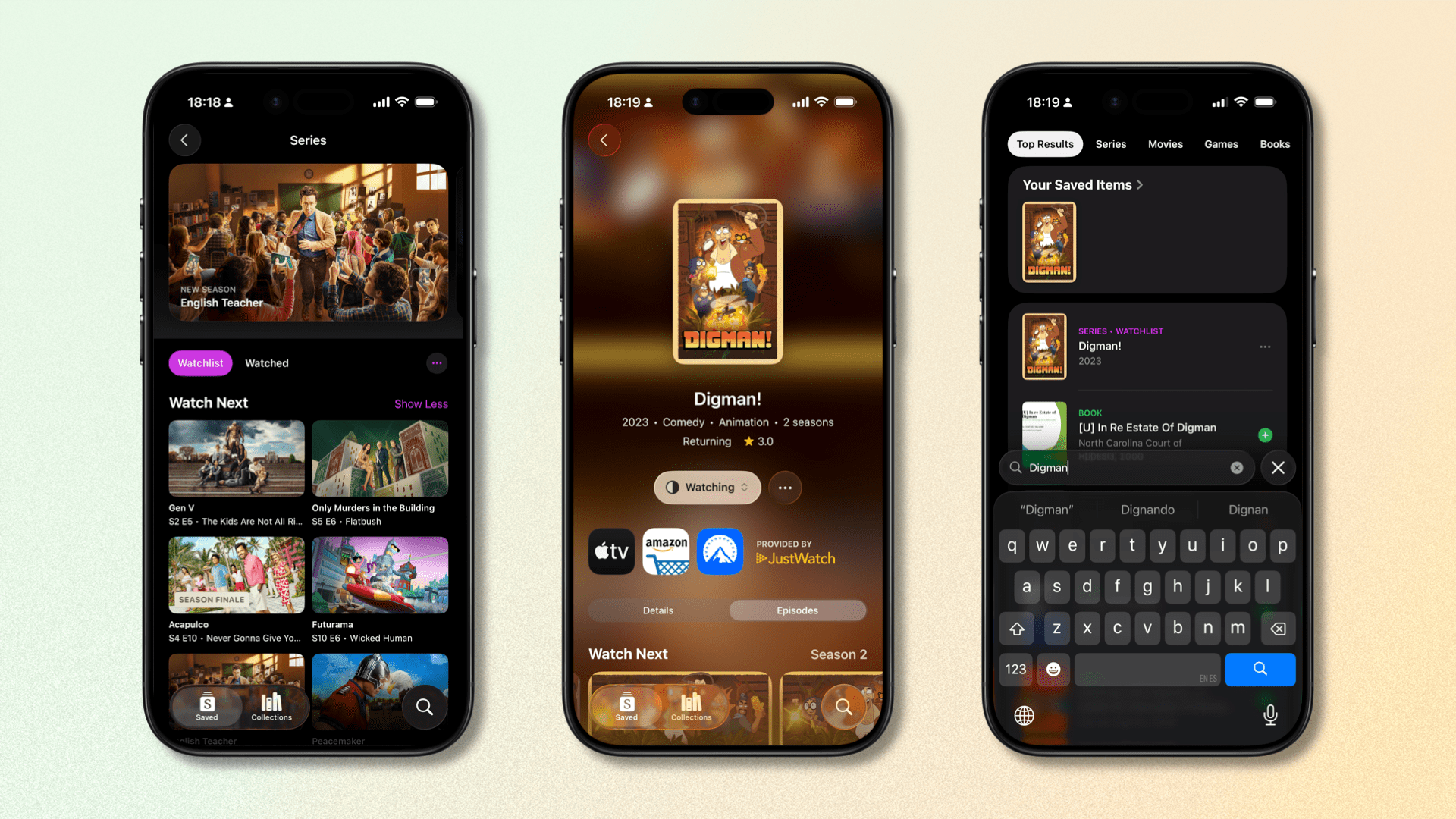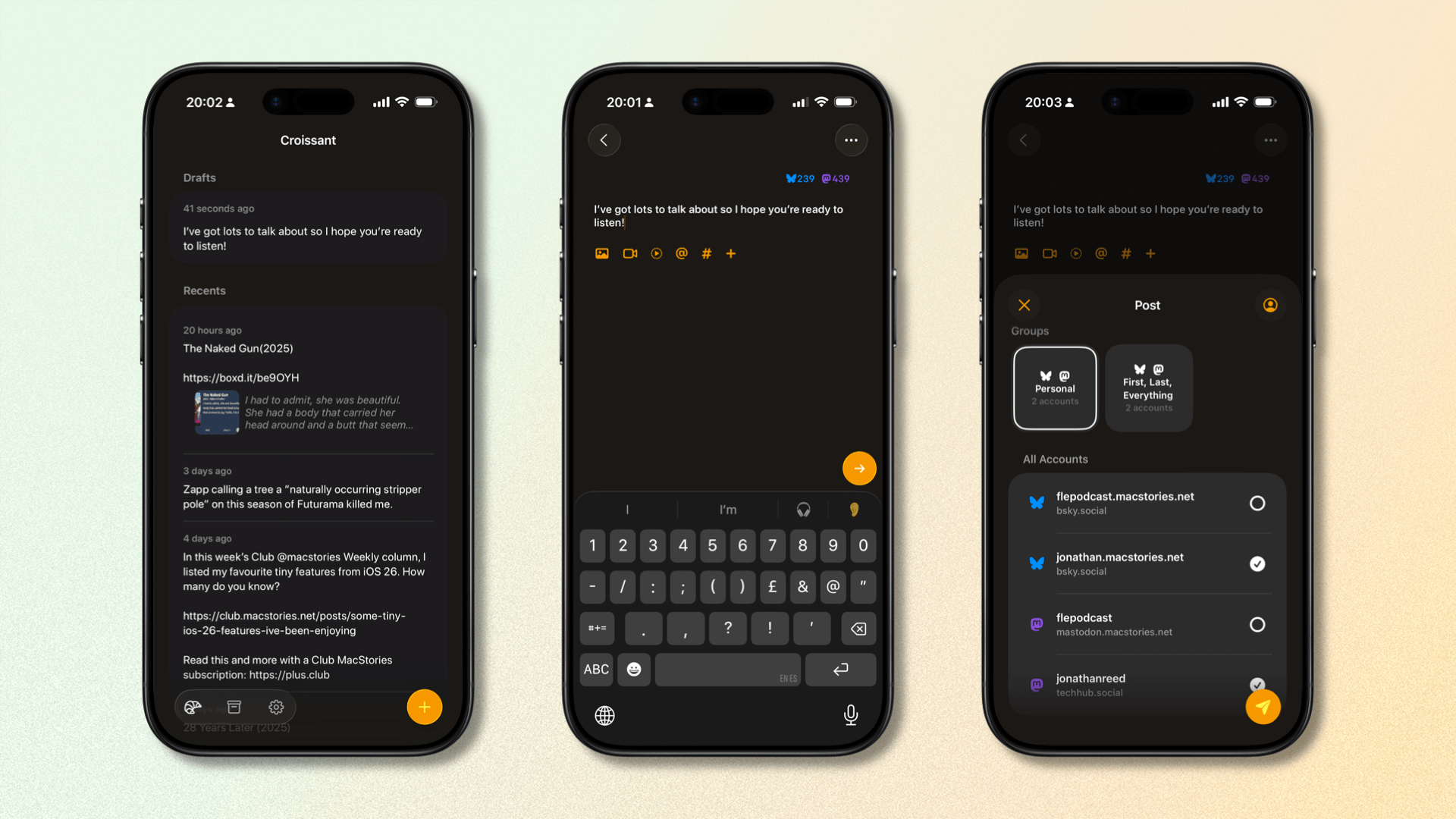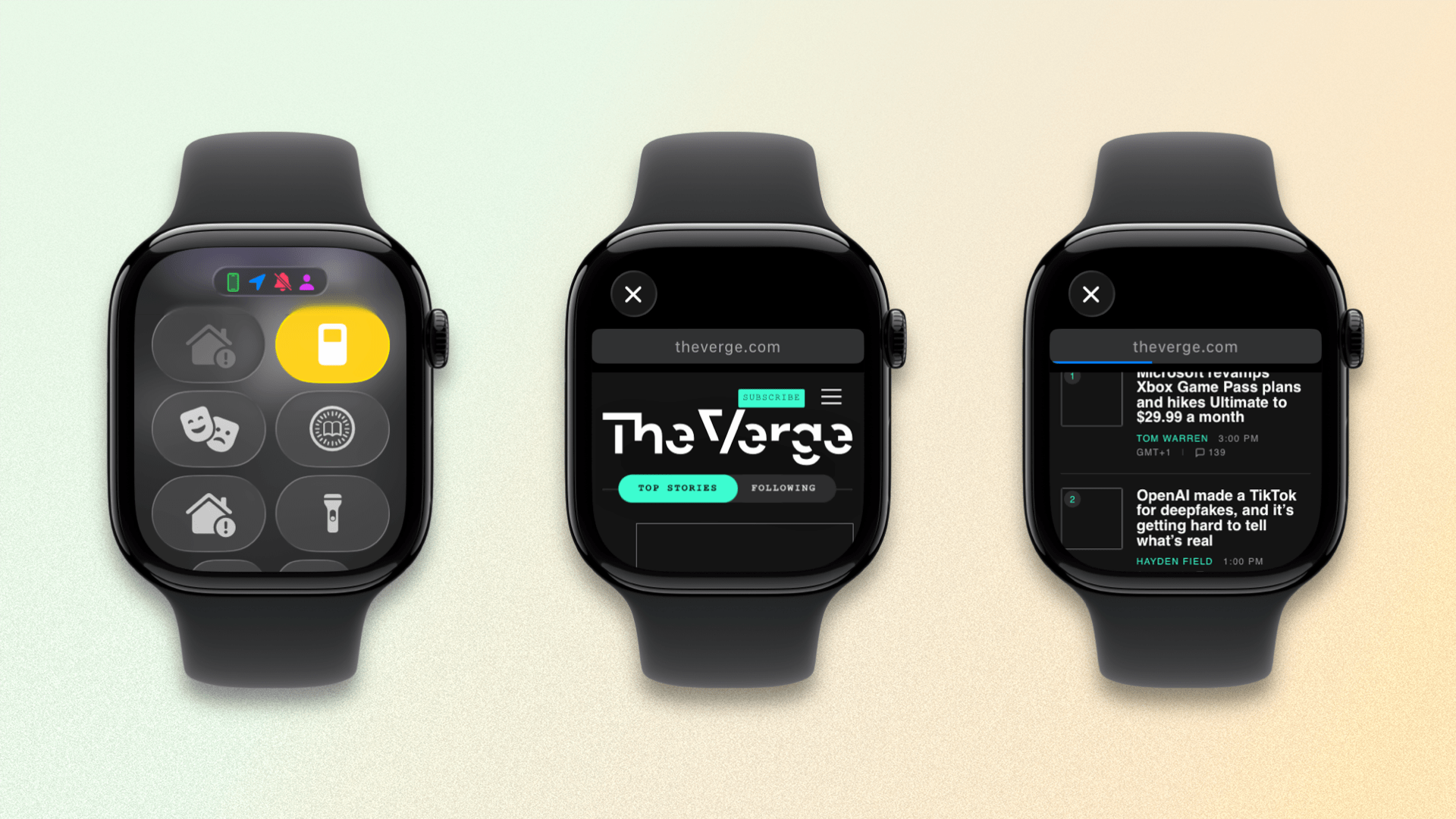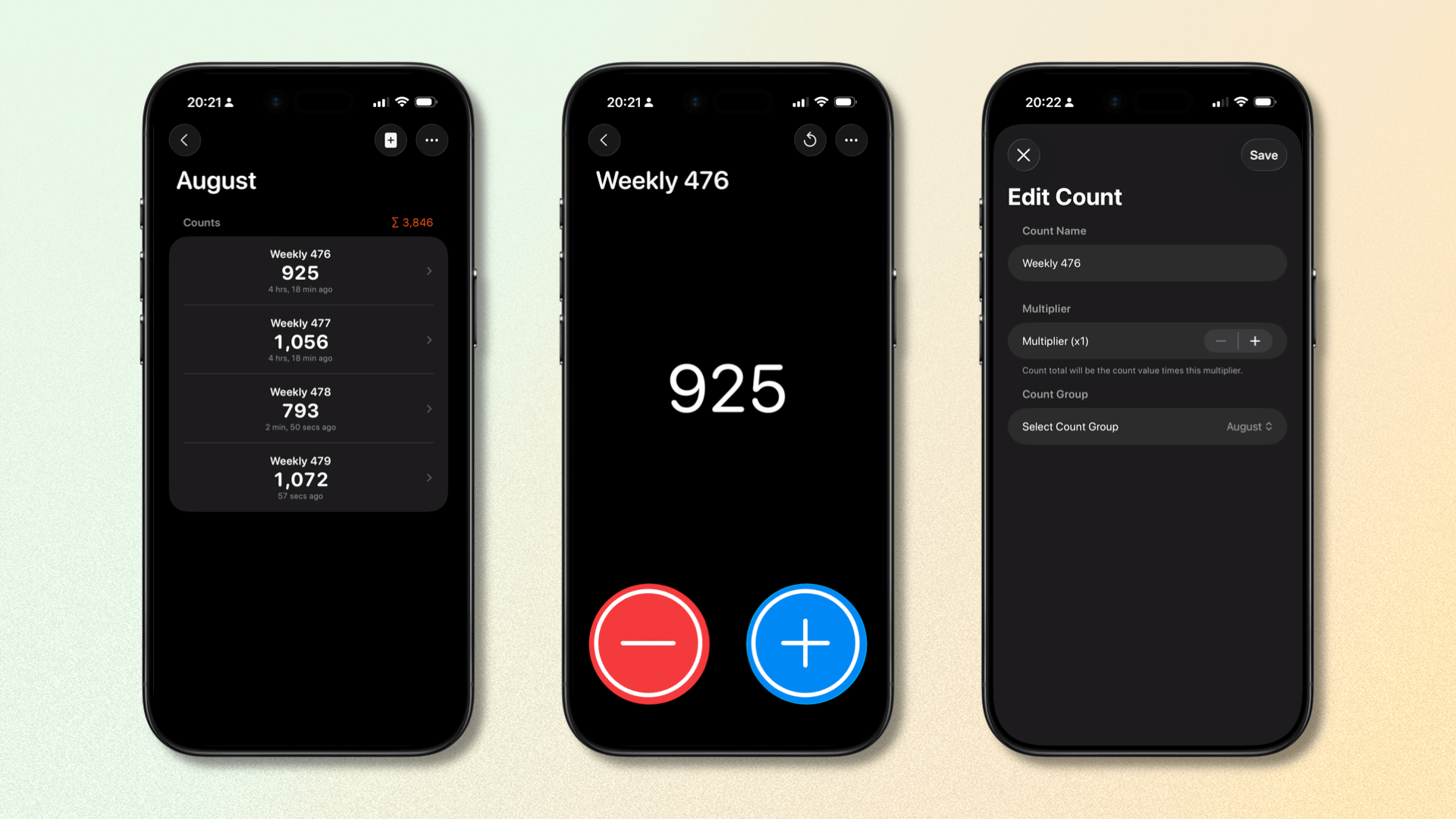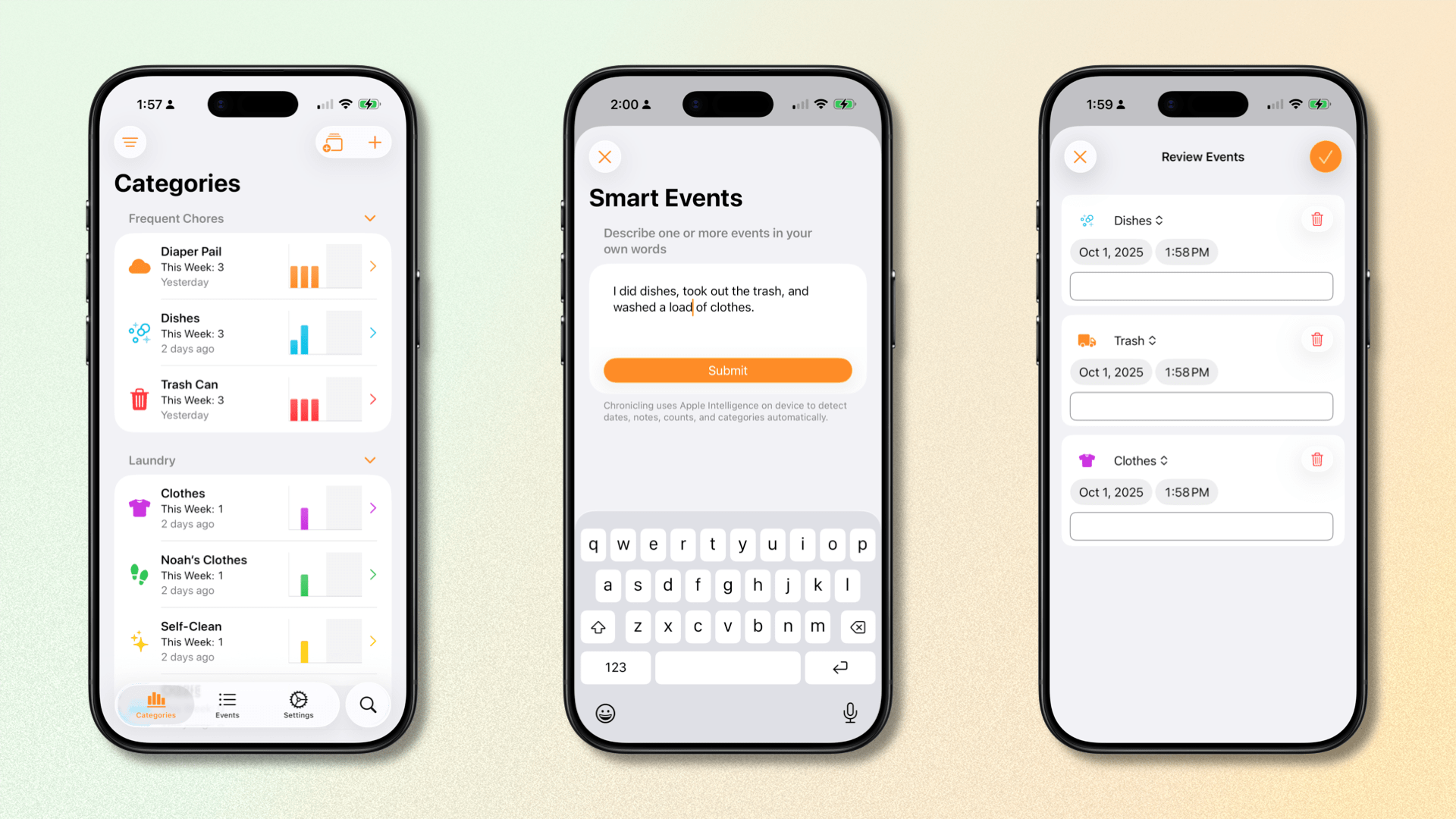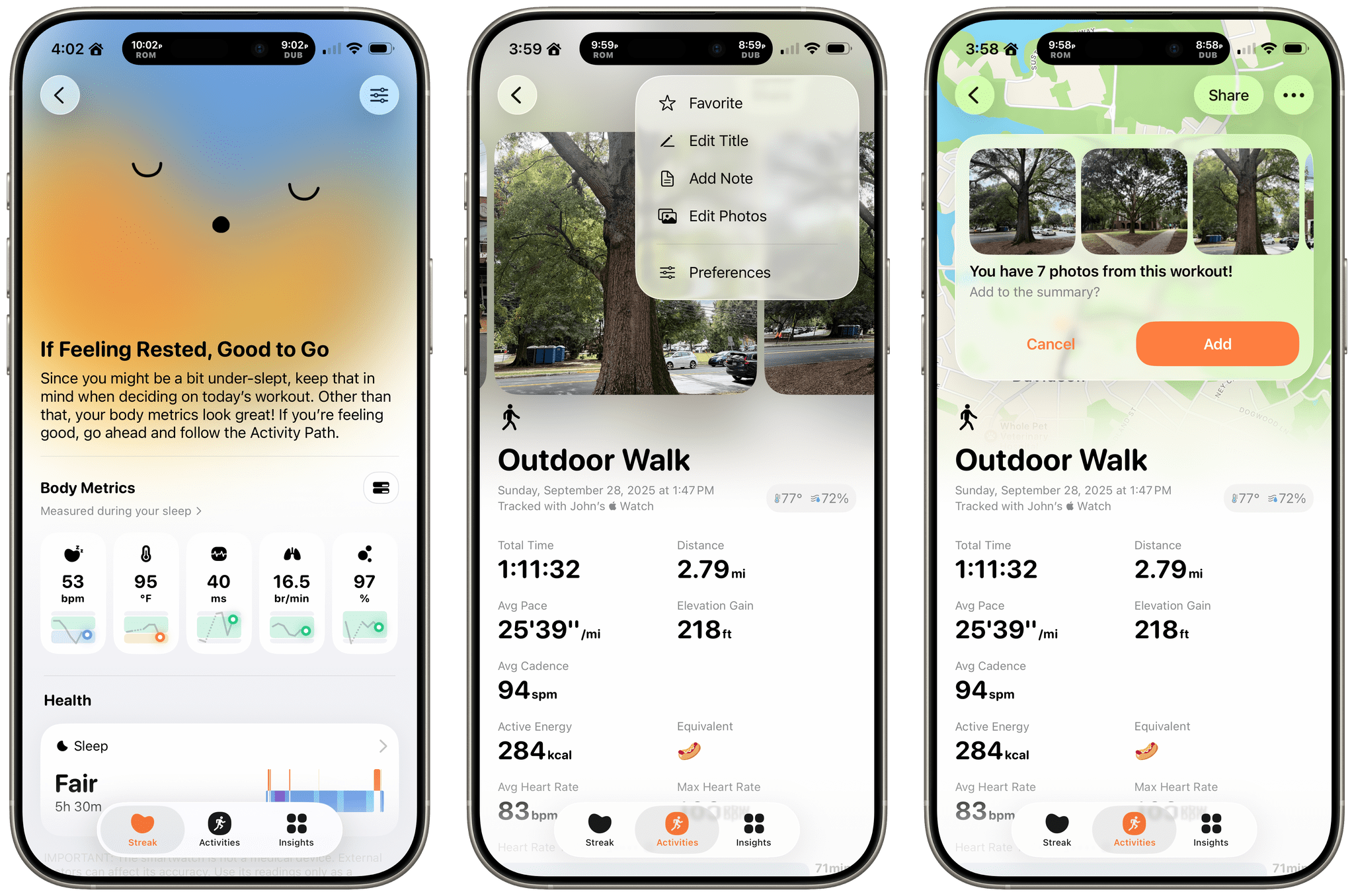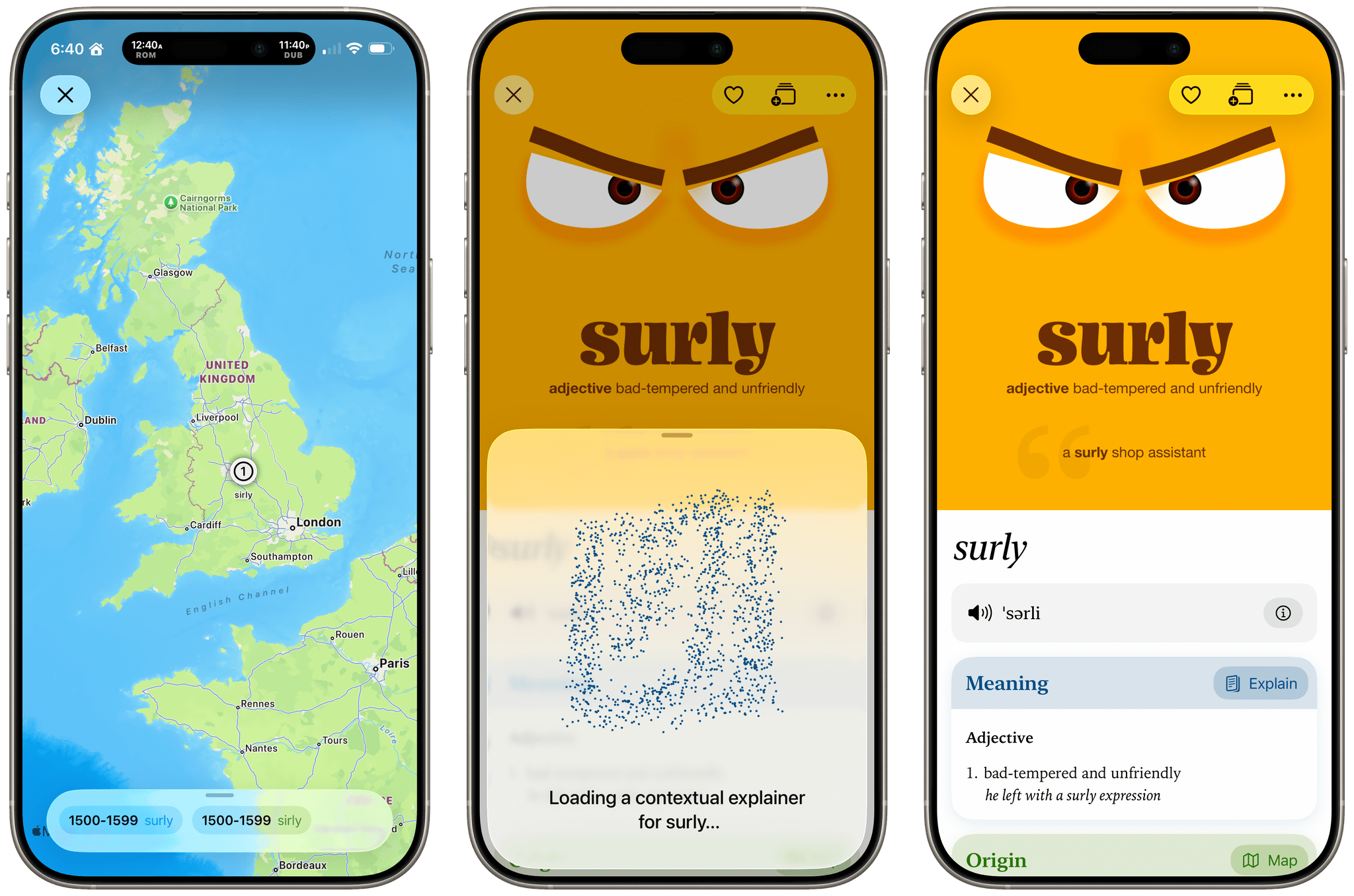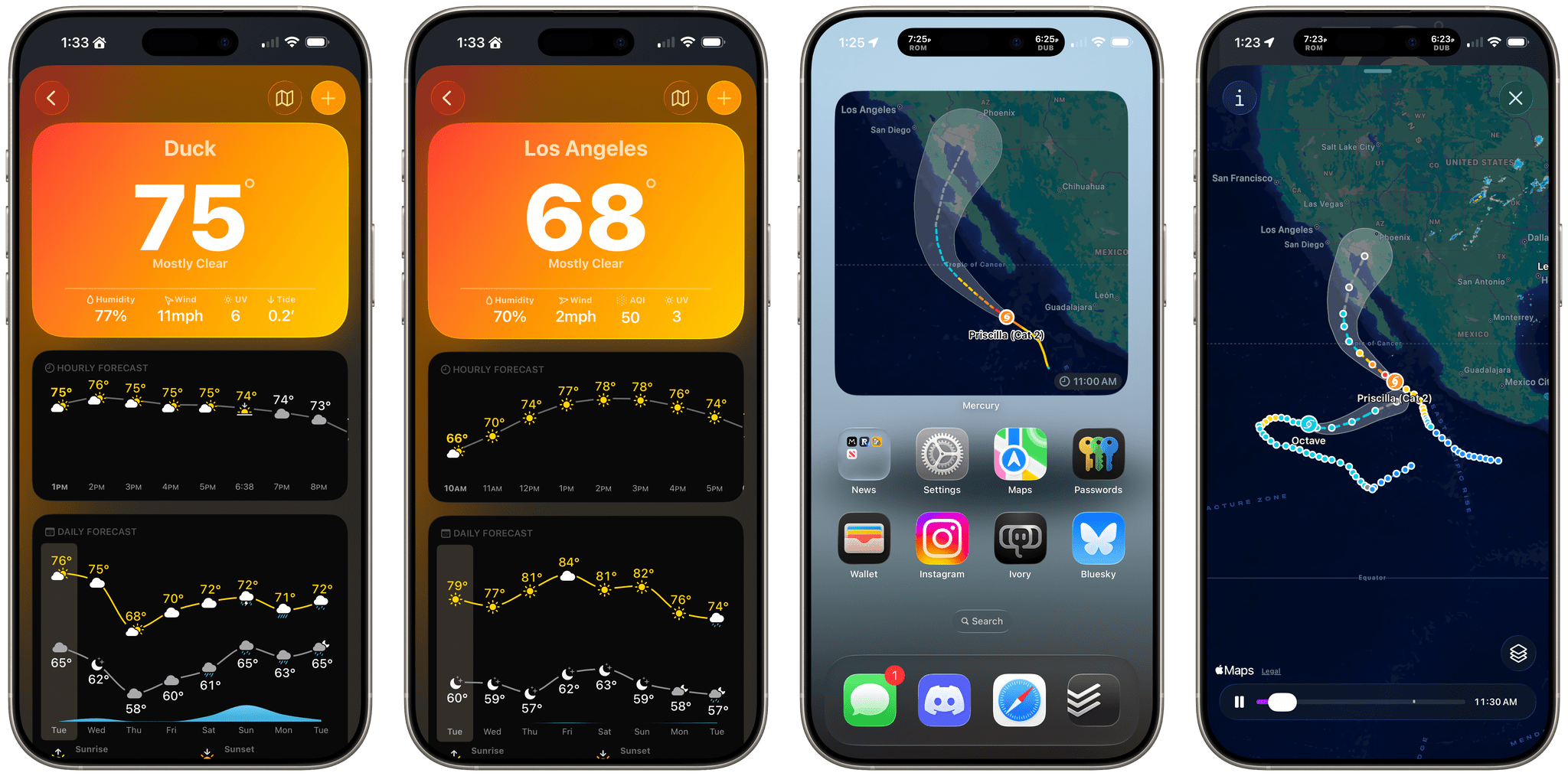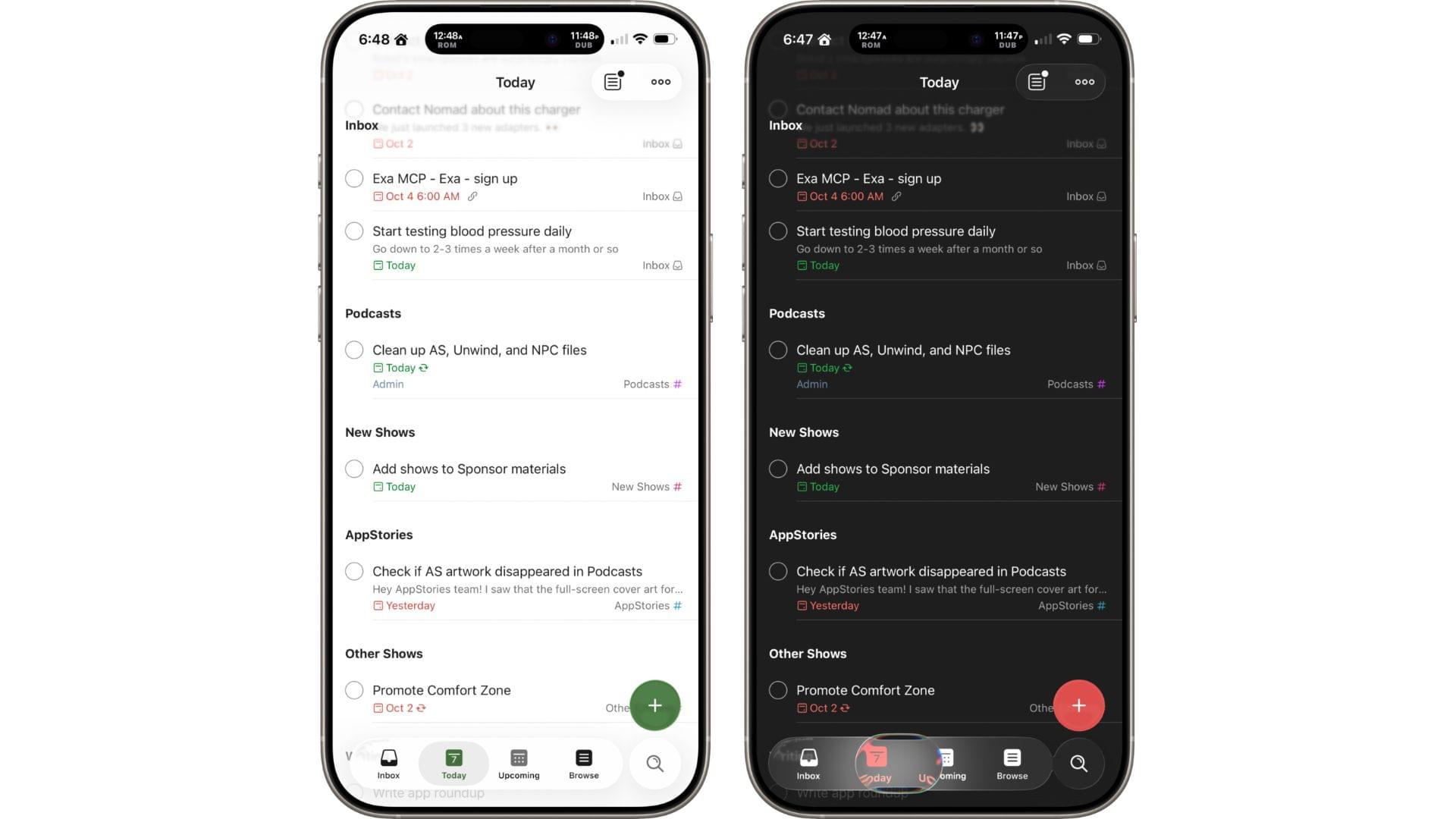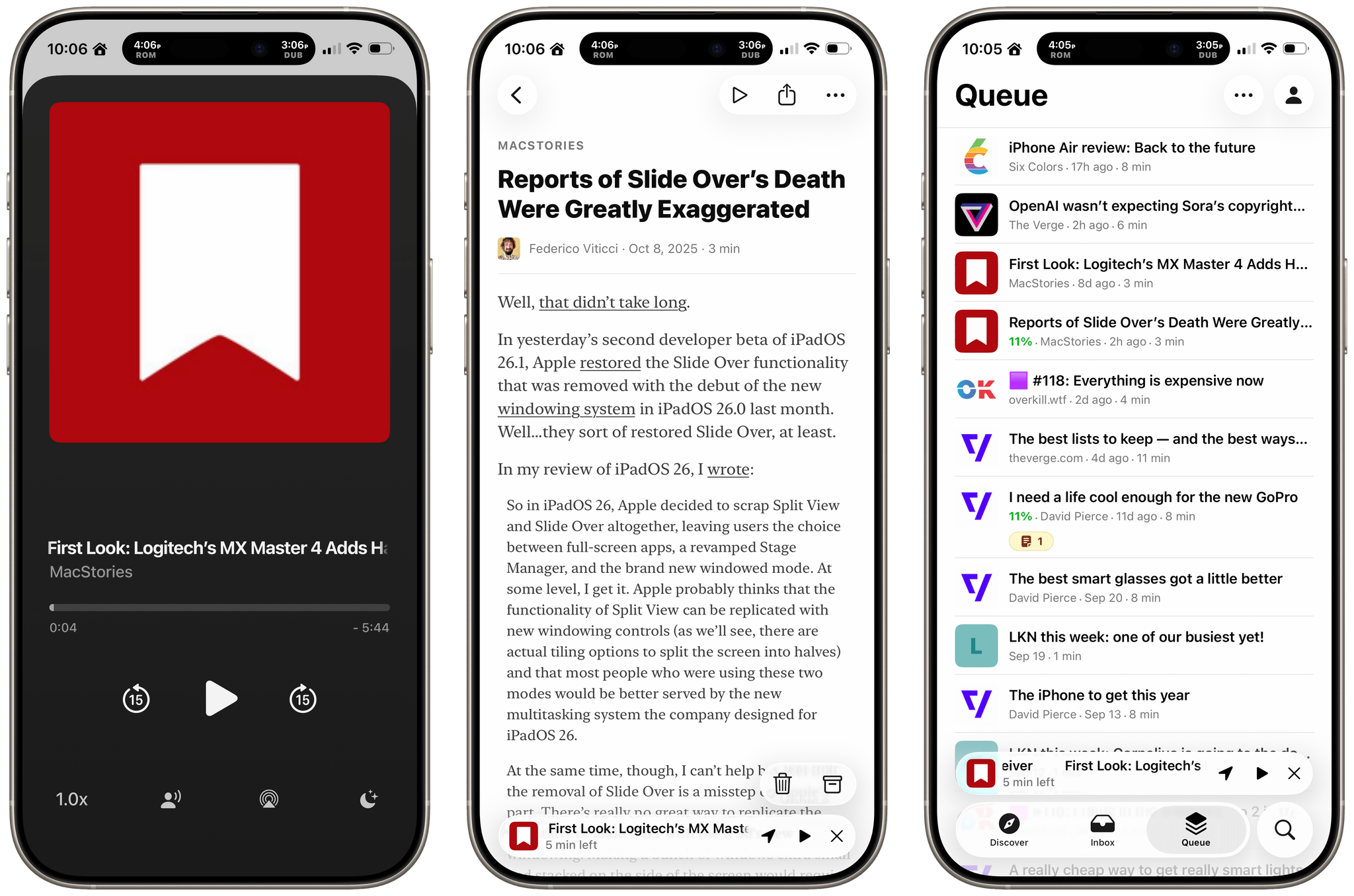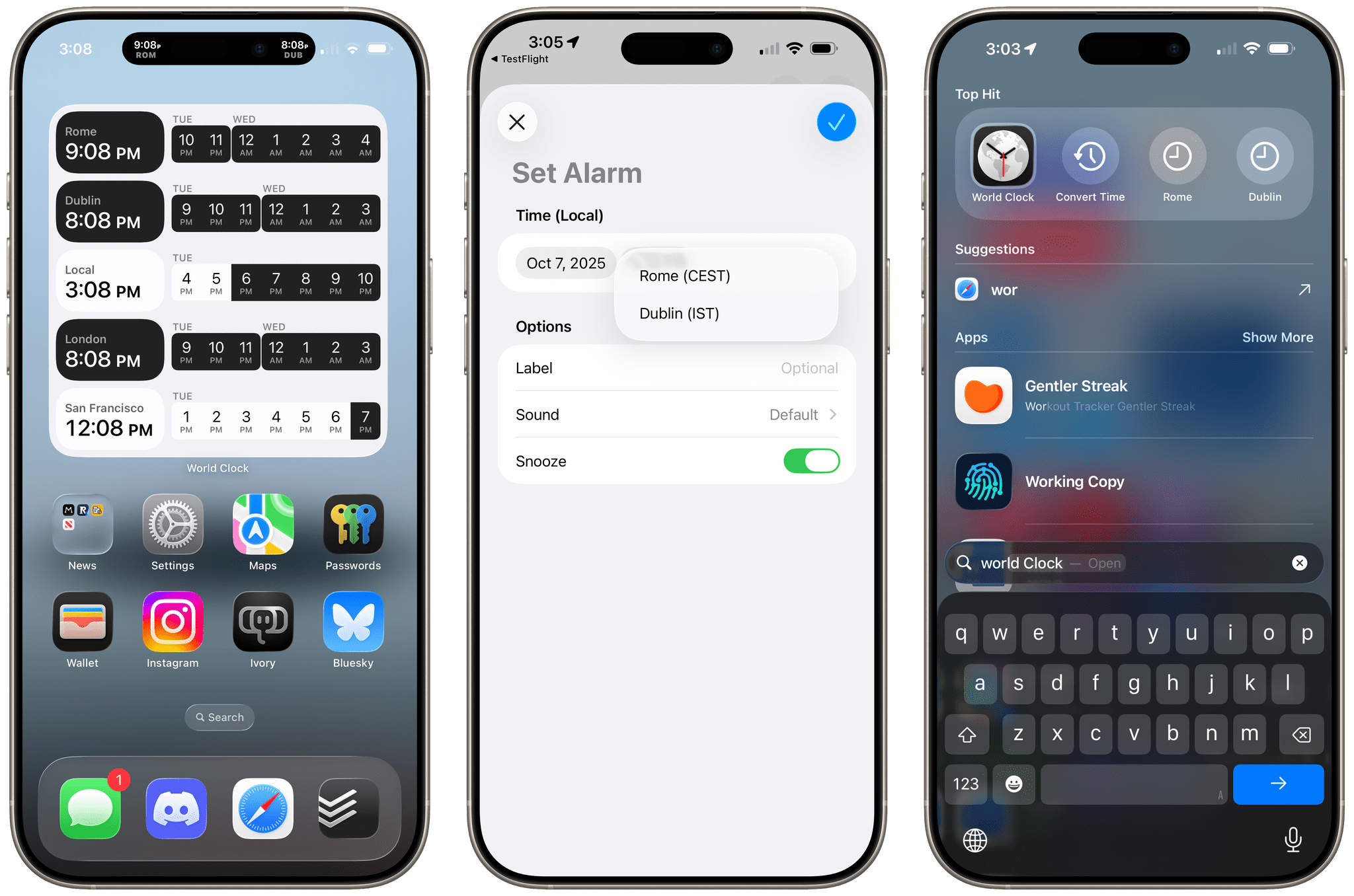Liquid Glass is the sort of change that takes some getting used to from the perspective of both users and developers. The design language shifted a lot over the course of the summer beta season, which made developers’ lives tougher than in some years. This has resulted in a variety of Liquid Glass implementations across our favorite apps, which is a fascinating study in the range of designs Liquid Glass encompasses.
Today, we wanted to share some of our favorite implementations of Liquid Glass and other features debuted this fall by indie developers. We’ll have more coverage in the weeks ahead, but let’s dive into some of the best OS 26 updates we’ve seen so far.
Devon
Art of Fauna
From developer Klemens Strasser, Art of Fauna is a unique jigsaw puzzle game with a focus on accessibility and animal conservation. Each puzzle features a gorgeous wildlife illustration from the 18th or 19th century and can be solved either by aligning pieces of the picture or by rearranging written descriptions of the animal pictured phrase by phrase. Everything about the app, from the font to the colors to the complexity of the puzzle phrases, can be adjusted to fit each user’s needs. With its beautiful artwork, intuitive gameplay, ambient sound design, and adaptability, it’s no wonder the app won an Apple Design Award for Inclusivity this year.
Version 1.8 of Art of Fauna came out alongside iOS 26 with Game Center integration and Liquid Glass design elements in its navigation buttons. But the most interesting new feature is integration with a new app from the team behind Structured called Awake. Put simply, Awake is an alarm clock app that helps you wake up by challenging you to accomplish a task before you can disable your alarm in the morning. With this integration, you can choose to make an Art of Fauna puzzle your morning mission, starting your day with some brain training and a beautiful puzzle. In Awake, you can select the difficulty level of the puzzle you’re presented with each morning, as well as whether you’d like the app to prefer unplayed puzzles over previously played ones.
Art of Fauna is available on iPhone and iPad. It can be downloaded from the App Store and includes ten puzzles for free. There are 100 other puzzles available from five different biomes that can be purchased all at once for $8.99 or in packs of 20 for $2.99 each. 20% of all proceeds from the app are donated to nature preservation causes, and you can learn more about the supported causes in the app’s Giving Back section.
Play
Marcos Tanaka’s watch later utility is a go-to for many – myself included – when it comes to saving, organizing, and watching YouTube videos. With its latest update, version 2.6, Play has added several features enabled by iOS 26.
First up is a Liquid Glass redesign. The sidebar, toolbar, and buttons are all elevated above the content and incorporate the transparent glass material. Buttons and view transitions now feature some fun animations, too, like when the ‘+’ button morphs into the Add Video popover once it’s tapped.
The on-device Apple Intelligence model has enabled Tanaka to add a couple of new AI features as well. Each video’s detail view now includes a ‘Generate’ button that will create and present a text summary of the video’s contents. For those who want to get an idea of what a video is about before watching it, or for those who want a quick refresh on a video they’ve watched before, this feature will come in handy, and it’s a clever application of the on-device model now available to developers. Also, when adding tags to a video, Play can now suggest tags based on a video’s contents, both existing tags and new tags that you can create.
Play is available on iPhone, iPad, Mac, Vision Pro, and Apple TV and can be purchased from the App Store for $2.99. Additional features, like subscribing to channels within the app and searching video transcripts, require a subscription to Play Premium, which costs $2.99/month, $19.99/year, or $99.99 for a lifetime subscription.
Things
To-do app Things is putting its own spin on a Liquid Glass redesign with version 3.22. Its classic icon has been updated to fit the new design language. Buttons glow and dynamically morph into menus when pressed. The shape of the interactive blue-tinted ‘+’ button even slightly gives way if you grab it with your finger and move it around the screen. It’s a lot of fun to play with.
What strikes me most about this update, though, is how very Things-y it still looks while staying in step with Apple’s new design direction. I think Things is the perfect example of an app maintaining a modern aesthetic even as it stays true to its unique design and heritage. It fits in perfectly with iOS 26; at the same time, it’s a natural progression of what came before, not a solid break.
The new version of Things also incorporates platform-specific features introduced this year. The app is embracing iPadOS 26’s menu bar with an excellent set of menu items and keyboard shortcuts, including a ‘New Window’ item and the ability to create a tutorial project from the Help menu. Things controls are now available in Control Center on watchOS and macOS, and the app integrates with the Mac’s revamped Spotlight, too. And on visionOS, Things is one of the first third-party apps to offer visionOS-native widgets, a great option for keeping track of tasks on the Vision Pro.
Things is available for iPhone, iPad, Mac, Apple Watch, and Vision Pro. Each version can be purchased separately from its respective App Store: $9.99 for the iPhone and Apple Watch version, $19.99 for the iPad version, $49.99 for the Mac version, and $29.99 for the Vision Pro version. Things Cloud, the company’s cross-platform syncing service, is included with the purchase of the app on any platform.
Widgetsmith
David Smith and team have taken the opportunity with version 8 not only to update Widgetsmith’s design with Liquid Glass, but to reimagine the app’s main interface to make it easier for users to organize, create, and redesign their beloved Home Screen widgets. Between its glassy new navigation bar and rethought layout, the app has never looked better.
The Widgets tab now features the ability to sort your widgets by size, type, and theme, with horizontally scrolling lists to make it easier to see an overview of your collection and find exactly what you need. Widget creation has been consolidated into a single screen accessed via the (nicely tinted) ‘+’ button in the upper-right corner. Once you’ve chosen a widget size and need to pick its type, you can take advantage of the new search bar – bottom-aligned, of course – to find the kind of widget you’re looking to make.
Another big change has come to the way you apply themes to widgets. Now, when you’re editing a widget and get its theme just right, you can instantly apply that theme to any of your other widgets without the need to navigate away from the one you’re working on. In combination with the recent addition of automatic widget theming based on an image, this feature can help you get your new aesthetic up and running in no time. The latest version of the app also includes new backgrounds to match the latest iPhone models.
Widgetsmith is available for iPhone, iPad, Mac, and Vision Pro. It can be downloaded for free from the App Store, with some features like weather, interactive widgets, and photo filters requiring a subscription to Widgetsmith Premium, which costs $1.99/month or $19.99/year.
Jonathan
Sequel
Popular media tracker – and MacStories Selects award winner – Sequel was recently updated for OS 26 on iPhone, iPad, Mac, and Vision Pro, introducing some solid functional changes.
Firstly, Sequel has been updated with Liquid Glass, and for my money, it’s one of the nicest implementations of a complicated new design system. Transparency feels good, and the content really sings with an enjoyable scrolling experience that doesn’t sacrifice information or legibility. Developer Roman Lefebvre has also taken the opportunity afforded by the new design to add a tab bar along the bottom of almost every screen.
This tab bar addresses a long-standing issue that occasionally bothered me, which was the lack of quick access to the app’s three core sections: Saved, Collections, and Search. Previously, you needed to swipe back or go to the top of the screen to access them, but now, each of those sections is a quick tap away, down at the bottom of the screen near your thumb.
Search is also more powerful, combining searches of your saved items with titles from the web. There’s even a handy new ⌘ + F shortcut to instantly access the search bar on the iPad and Mac.
Sequel is available on iPhone, iPad, Mac, and Vision Pro as a free download. Additional features, such as Trakt syncing, release notifications, notes, and more, are available with a Sequel+ subscription, which costs $2.99/month, $19.99/year, or $99.99 for a lifetime subscription.
Croissant
Croissant is my go-to app for cross-posting to multiple social media platforms. The app supports posting to Mastodon, Bluesky, and Threads with unlimited accounts. It has been updated with Liquid Glass, which has been carefully applied; however, the more significant updates are elsewhere.
Firstly, there is a new Home view that combines drafts and recent posts in one unified view. It can be helpful to have, but if you still prefer to launch straight into the Compose view as I do, there is an option to default to that behavior.
Next up is probably one of the app’s most valuable features: Account Groups. With this, you can group certain accounts together so that when you’re choosing where to send a post, you don’t have to tap on each account individually and risk making a mistake. I’ve found this helpful when creating separate posts for my personal and podcast accounts.
There are lots of other excellent quality-of-life updates, including GIF support, reordering of threads while you are composing them, and the ability to add another reply to a post you have already sent. All in all, these updates are nice and chunky, and they’re worthy of a 2.0 release.
Croissant is available on iPhone, iPad, and Mac as a free download. To unlock its cross-posting features, you will need a subscription, which costs $2.99/month, $19.99/year, or $59.99 for a lifetime subscription.
µBrowser
One of the hidden gems on watchOS, µBrowser allows you to browse the web directly from your Apple Watch. There are limits to this; for instance, some websites won’t load their images, and due to Apple platform restrictions, the app can’t store cookies. But for a quick glance at a favorite site, it can be handy in a pinch, negating the need to pull out your iPhone.
I use µBrowser to quickly check the day’s headlines on The Verge or The Onion, and version 4.0 makes it even easier to do so with the addition of Control Center controls. This new feature in watchOS 26 allows third-party apps to place controls alongside current Control Center residents, such as iPhone Ping and Water Lock. I now have a bookmark that, when tapped, launches µBrowser directly into The Verge. It’s small but clever.
µBrowser is available for $1.99 on the App Store.
Countr
Countr is an app that, well, counts! It allows you to manually count anything by creating a named item and then manually adding to the count as needed. You can even make a whole list of named counts.
With version 4.0, Countr has been fully updated for all the 26 OSes and now supports Count Groups, which you can add your counts to and create group totals from. For example, I could count the number of words I write each week in my MacStories Weekly column for Club MacStories members, grouped by month, and compare the total over several months. You can also get more advanced with multipliers, but in a nutshell, that’s what Countr is for.
In addition to adopting the new Liquid Glass design, Countr now supports multiple windows on the iPad, just in time for the introduction of the new windowing system in iPadOS 26. Version 4.0 also includes App Intents for automating your counts with Shortcuts and a completely redesigned Apple Watch app that perfectly mimics the iPhone app and features some lovely haptics. It’s a big update for a niche but useful app.
Countr is available for free from the App Store for iPhone, iPad, and Apple Watch, with unlimited Count Groups and alternate app icons unlocked via a subscription that costs $0.69/month or $4.99/year.
Chronicling
Look, I’m someone who finds looking at charts a little boring; that’s just me. However, something I can’t deny is that Chronicling can make any chart or statistic look beautiful. Winner of Best Watch App at last year’s MacStories Selects awards, Chronicling allows you to track almost anything and has made some notable updates in version 1.6.
Firstly, the entire app has adopted the Liquid Glass design, and developer Rebecca Owens has deployed the new design language thoughtfully, taking advantage of elements like minimal buttons to showcase more of the charts you create.
Secondly, Chronicling has implemented Apple Intelligence to allow you to log various events simultaneously. Take, for example, the chores you might be tracking. You might have ’Bins Out’, ‘Wash Car’, and ‘Water Plants’. If you have a very productive morning and complete all three tasks simultaneously, you can quickly log them by tapping Smart Events and writing, “Log Bins Out, Wash Car, and Water Plants”. Apple Intelligence will detect these events and log them for you, providing a preview for your confirmation.
I’m not a huge tracker of things, but in my testing, this technique seemed to work, if not perfectly (Apple Intelligence would very occasionally get stuck), then very well indeed. I can easily imagine someone like our own Devon, who tracks numerous tasks, finding a lot of use in this feature.
Chronicling 1.6 also comes with some new Shortcuts actions and improvements to search and is available for free from the App Store. To unlock all features, a subscription is required, which costs $0.99/month, $9.99/year, or $39.99 for a lifetime subscription.
John
Gentler Streak
By now, I’m sure MacStories regulars know I’m a big fan of Gentler Streak. I appreciate its low-key, encouraging approach to fitness and have used it continuously for a few years now.
Gentler Streak’s Liquid Glass implementation is one of my favorites. The tab bar and buttons let the colors of the app’s maps and illustrations shine through without being distracting, and the wealth of information that Gentler Streak crunches about your workouts and wellness benefits from the way it fills the screen. I also appreciate how the section headers for Activities and Insights shrink as you scroll to make room for information about your workouts.
The app’s functionality is largely the same as before, but the Liquid Glass animations bring it to life in a new way that seems to fit it perfectly. Some apps may work better with views that are largely static, but for a fitness app, a little bounce to encourage me to get out and get active is perfect.
Gentler Streak is available from the App Store as a free download but requires a subscription or one-time purchase for some features.
LookUp
Vidit Bhargava spends a lot of time thinking about how we interact with apps, and it shows from LookUp’s latest update. The dictionary app, a longtime MacStories favorite, includes an excellent implementation of Liquid Glass that feels right at home.
Like the other apps in this roundup, LookUp adopts the transparency of Liquid Glass both in the tab bar at the bottom of its main view and in the buttons throughout the rest of the app. Instead of adopting the more translucent frosted glass approach taken by some apps, LookUp’s tab bar and buttons are fully transparent in a way that’s reminiscent of the Photos app or Music. Unlike those apps, though, LookUp suffers from fewer legibility issues, thanks to its use of big, bold expanses of color and icons with a fill that offsets them from their backgrounds.
Apart from the new design, LookUp has added three new ways to expand your vocabulary with interactive quizzes, example sentences, and conversational questions. For anyone working on growing their vocabulary – especially those for whom English isn’t their first language – these are excellent tools. What I appreciate most, though, is the thoughtful way Vidit has employed AI in LookUp. It’s always clear when the app is calling on a local or cloud model to support a feature, both visually (using a particle cloud to represent the AI generation process) and in the app’s text.
It’s been fun to watch LookUp evolve over the years. It’s always been a beautiful app, but over time, it’s become a comprehensive tool for vocabulary building, drawing on the latest Apple technologies to stretch what it can do further.
LookUp is available as a free download on the App Store for the iPhone, iPad, Mac, Apple Watch, and Vision Pro, with certain features requiring a $2.99 monthly or $29.99 annual subscription, or a one-time payment of $59.99.
Mercury Weather
Mercury Weather started as a simple, beautifully designed weather app. Over time, the team at Triple Glazed Studios has built on that foundation, adding features without sacrificing the app’s design.
With iOS 26, Mercury Weather 3.0 has adopted Liquid Glass, which suits the app well. The map, share, and globe buttons are all transparent, as are the elements in the satellite view. The app’s icon has been updated too. It’s a terrific implementation of iOS’ new design language that doesn’t get in the way of the app’s utility. Instead, Mercury Weather is right at home on iOS 26 with a fresh, modern look.
Version 3.0 adds new features as well. One that I was happy to see, since we’re in the heart of hurricane season here in North Carolina, is hurricane and tropical storm tracking. The update shows a storm’s position, forecast cone, and other relevant data. There’s a new storm widget that comes in all available sizes and can be configured to show certain storm regions and other details.
Another addition to Mercury Weather is tide forecasts for the U.S. and Canadian coasts. You’ll see current conditions and a 48-hour forecast when you’re in a coastal location or browsing one.
Finally, Mercury Weather has added UV index and air quality data to its offerings. The current UV index is located under the current conditions in the app’s main view and can be tapped to get a 24-hour UV forecast. Air quality forecasts appear in the app whenever the AQI is predicted to reach moderate or high levels.
If you passed on Mercury Weather before, now is a good time to take another look. With version 3.0, the app’s feature set is far deeper than when it launched, and its design and widgets make it a delight to use.
Mercury Weather 3.0 is available on the iPhone, iPad, Mac, Vision Pro, and Apple Watch as a free download from the App Store, with monthly and annual subscription options as well as a one-time payment option.
Todoist
Todoist is a great example of how Liquid Glass doesn’t have to distract users. The app adopts the new tab bar style with the search button expanding horizontally when tapped with a bouncy animation. The selection bubble is present when moving across tabs, too.
What you won’t find, though, is distracting text bleeding through the tab bar or buttons. The text is there, visible under the navigation elements, but I don’t find it distracting, especially when using a light theme where the tab bar and buttons have a frosted glass look that provides contrast against the app’s content. Text shines through more in dark mode, but most of Todoist’s tab bar uses filled icons that set them off nicely from the dark background.
Overall, I like the effect a lot. My lists scroll beneath the tab bar and buttons from the top of my iPhone to the bottom, making the app feel more expansive.
Todoist is available as a free download from the App Store for the iPhone, iPad, and Apple Watch, and as a separate download on the Mac App Store, with certain features requiring a subscription.
Matter
Like Todoist, Matter, which is a read-later app for the iPhone and iPad, is a text-heavy app where how Liquid Glass is implemented matters a lot. The tab bar and other buttons in the main view use a frosted glass treatment that’s similar to Todoist. Plus, the tab bar shrinks, animating to the left to only show the selected tab and the search button when you begin scrolling a list. The design is similar when you view an article, except that the buttons move offscreen as soon as you begin scrolling, allowing what you’re reading to fill the page. It looks amazing.
Matter has also added an Inbox tab, simplified its navigation, and made lists more readable. It’s a complete package that takes the design to a new level beyond a simple “check the box” Liquid Glass approach.
Also included in the update are new text to speech voices that are easily the best of any read-later app I’ve tried. The AI-generated voices are more natural sounding, making listening much easier and more enjoyable than other apps. If, like me, you haven’t used Matter in a while, it’s a great time to revisit it. There’s a lot to be said for its elegant, simple approach to reading.
Matter is available on the App Store as a free download with certain features requiring a subscription.
World Clock Widgets
My son is in Ireland, Federico is in Rome, and I have friends scattered across time zones here and abroad. I usually have a pretty good internal clock for everyone’s local time, but it all gets thrown out the window when I travel. Plus, the mental load of looking at the clock at home and doing time zone math in my head is just more than I want to deal with some days.
That’s why I’ve been using World Clock Widgets for a long time now. My favorite feature is the Live Activity that shows me the time in Ireland and Rome and is triggered by a Focus mode that starts when I wake up in the morning.
But there’s a lot more to World Clock Widgets than that. The app has been updated with Liquid Glass touches that you’ll notice in the treatment of buttons on the iPhone, iPad, and Mac. The glass style widgets look great on your iPhone or iPad’s Home Screen and the Mac’s desktop, too. As always, there are a lot of widgets, from small simple designs to extra large complex ones, to suit a variety of needs.
My favorite new feature, though, is World Clock Widgets’ integration with AlarmKit. You can set an alarm based on the time anywhere in the world, and no matter where you are, the alarm will go off at the scheduled time. Another great addition is app actions, which appear in Spotlight search and give you quick access to time zone conversions as well as the time in cities you’ve saved in the main app.
When you travel across time zones, or if you work with a remote team, World Clock Widgets can’t be beat. The app is available on the App Store as a free download with ads, which can be removed with a one-time payment of $4.99.


